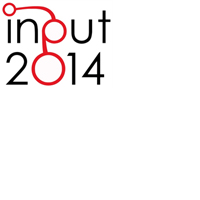Geovisualization Tool on Urban Quality. Interactive Tool for Urban Planning
Abstract
This paper describes the implementation of a tool that enables to gather and compare data from different sources for the benefit of urban planners. The tool is easy to access on different types of devices (personal computers, tablet, smartphones) thus being easily available in many various situations from urban planners and decision makers. It may also be used to find correlations between different phenomena in different time frames, so that solutions to possible problems can be rapidly suggested. The paper shows the process of implementation of the tool and some examples of application to the city of Torino in Northern Italy, a city who dealt with several urban transformation in the last two decades.Downloads
References
Capolongo, S. (2009), Qualità urbana, stili di vita, salute, Hoepli.
Nuvolati, G. (1998), La qualità della vita delle città: metodi e risultati delle ricerche comparative, FrancoAngeli.
Saccomani, S. (2004), Programmi complessi: una rilettura delle esperienze, In: Valutare i programmi complessi (Regione Piemonte), Stamperia artistica di Savigliano (ITA).
Salzano, E. (2003), Fondamenti di urbanistica: la storia e la norma, Laterza.
A&RT, (2008), Torino. Tredici anni di attuazione del PRG, Atti e Rassegna tecnica della Società degli Ingegneri e degli Architetti in Torino. Nuova serie – Anno LXII – Numero 1-2 – Marzo-Aprile 2008.
Zanelli, M. (2012), Riqualificazione, rigenerazione, costruzione, Inforum, Informazioni su Riqualificazione Urbana e Territoriale.
Minucci, F. (2005), L’evoluzione del governo del territorio e dell’ambiente, Dalla logica dei comandi alle logiche condivise, UTET libreria.
Riganti, P. (2003), Trasformazione urbana e mobilità, Una guida alla valutazione dei progetti, FrancoAngeli.
Comune di Torino. (2013), Geoportale del Comune di Torino. http://www.comune.torino.it/geoportale
ESRI. (2013), Website to ESRI and ARCGIS program. http://www.esri.com
OICT. (2013), Osservatorio Immobiliare della Città di Torino. http://www.oict.polito.it
Google Fusion Tables. (2013), Support Google for Fusion Tables utilization. http://support.google.com/fusiontables.

Copyright (c) 2014 Tema. Journal of Land Use, Mobility and Environment

This work is licensed under a Creative Commons Attribution 4.0 International License.
Authors who publish in this journal agree to the following:
1. Authors retain the rights to their work and give in to the journal the right of first publication of the work simultaneously licensed under a Creative Commons License - Attribution that allows others to share the work indicating the authorship and the initial publication in this journal.
2. Authors can adhere to other agreements of non-exclusive license for the distribution of the published version of the work (ex. To deposit it in an institutional repository or to publish it in a monography), provided to indicate that the document was first published in this journal.
3. Authors can distribute their work online (ex. In institutional repositories or in their website) prior to and during the submission process, as it can lead to productive exchanges and it can increase the quotations of the published work (See The Effect of Open Access)
